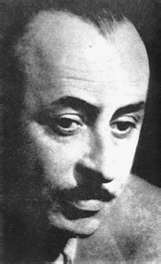The indigenous art
of Paraguay is fairly diverse as far as crafts and utensils are concerned, but
they are more known for their basket weaving and featherwork. The baskets were
used for a variety of purposes and came in a number of different styles. Most
of these baskets are woven using the fibers of canes, and not only do they
weave baskets, they also weave mats, shades, fans, and the piri (a type of hat
worn by country folk). Many of these products are also made with leather (or
are made entirely of leather as well). The related art of wickerwork also uses
a number of different kinds of palms.
Featherwork was
also used as a part of their fashion and accessories. It was mainly used in
bracelets, anklets, and collars. However, it was also used in headdresses
(often used in ceremonies) and even cloaks, like what was worn by Guaraní
medicine men. Embroidery and other textile arts are also very common. The
Jesuits and Spanish introduced different techniques to the Guaraní that they
built upon. One style of embroidery that is widely known from Paraguay is
Ñandutí. I love the shading they use here; it creates quite a dramatic effect.
Like most other
cultures, ceramics were an important part of their development. Most of their
ceramics were divided between two purposes: functional (cooking, food storage,
medicinal) and ceremonial (funeral urns). Ceramics is an artform primarily
learned by women. Wood carving is also a traditional art. Smoking pipes, chairs
and other pieces of furniture, and wooden masks are some of the items that are
most commonly carved. Animals and anthropomorphic characters were often carved
out of wood and gourds.
Today, there are
many Paraguayan artists who work in a variety of mediums: Julia Isídrez
(ceramics), Juana Marta Rodas (ceramics), Ricardo Migliorisi (painter,
architect, scenery designer, costumer), Jenaro Pindú (architect, sculptor,
cartoonist), Félix Toranzos (architect, artist, graphic designer), Edith
Jiménez (engraving, plastic arts), Pedro Di Lascio (engraver, painter), Serafín
Marsal (sculptor), Olga Blinder (engraver, sculptor, painter), Hermann Guggiari
(sculptor, engineer), Elsa Wiezell (painter), Lilí del Mónico (painter,
artist), Juan Sorazábal (painter), Ignacio Núñez Soler (painter), Josefina Pla
(painter, art critic), Livio Abramo (engraver, sketcher), Feliciano Centurión
(plastic arts), and Mabel Arcondo (artist, painter).
Paraguay has a
diversely strong literary history, despite many authors finding it easier to
get published in other South American countries. The vast majority of
literature is written in Spanish. Juan Silvano Godoi was a political journalist
during the mid-1800s and rose to prominence while helping to rebuild the
country after the war.
Gabriel Casaccia is
often considered the father of modern Paraguayan literature. Although he
started out studying law, he jumped into journalism after he graduated (I’m
sure his parents were thrilled). He ended up writing for a few magazines and
literary journals, and eventually wrote his own fiction novels, short stories,
and even a play.
As far as poets go,
Hérib Campos Cervera is one of Paraguay’s more important poets. He was quite an
outspoken poet, especially against the government and leadership. And because
of his Marxist viewpoints, making him a political target, he had found himself
on the run a couple of times in his life.
Another poet, Roque
Vallejos, actually started out as a forensic surgeon before he became a poet
and essayist. (Less chance of killing someone that way.) He was part of a
literary group called 60 Generation, which was a well-known group of writers who
focused mainly on socio-political issues of the time.
Up next: music and
dance






No comments:
Post a Comment